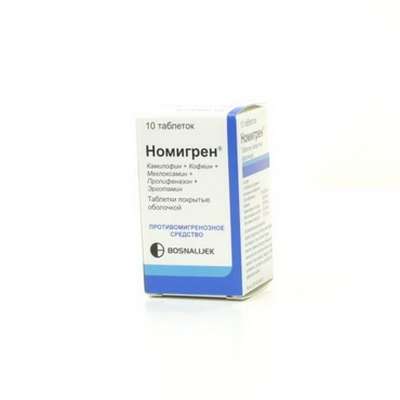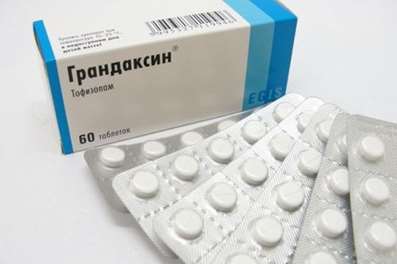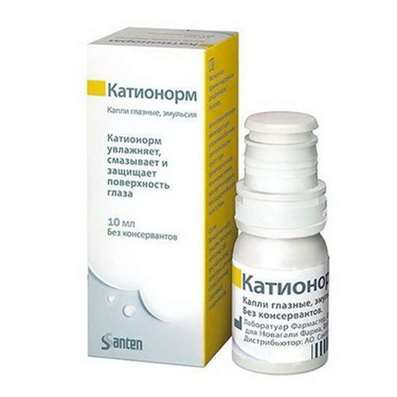Instruction for use: Droperidol
I want this, give me price
Latin name of substance Droperidol
Droperidolum (genus. Droperidoli)
Chemical name
1- {1- [3-p-Fluorobenzoyl) propyl] -1,2,3,4-tetrahydro-4-pyridyl} 2-benzimidazolinone
Gross formula
C22H22FN3O2
Pharmacological group:
Neuroleptics
The nosological classification (ICD-10)
F10.4 Abstinent state with delirium: Alcoholic delirium; White fever alcoholic; Delirium; Delirious condition with alcoholism and drug addiction
J999 * Diagnosis of respiratory diseases: Bronchography; Bronchoscopy; Diagnostic procedures in the nasal passages; Diagnostic examination of the bronchi; Laryngoscopy; Preparation for a Rhinoscopy; Preparation of the patient for bronchoscopy and / or bronchography; Preparation of the patient for bronchoscopy or bronchography; Preparation of the patient for diagnostic manipulations in the nasal passages; Preparation of the patient for diagnostic procedures in the nasal passages; Preparation of the patient for diagnostic procedures in the area of nasal passages; Rhinoscopy; Visualization of the thoracic cavity; Chest radiograph; Mediastinoscopy
K94 * Diagnosis of digestive tract diseases: Hepatic and splenic scans; Visualization of the liver by invasive methods; Isotope scintigrams of the liver; Laparocentesis; Ultrasound examination of the liver; Magnetic resonance imaging of the liver; Computed tomography of the liver; Esophageal Manometry; Anoscopy; Visualization of the biliary tract; Ultrasonic visualization of the liver; Gastroscopy; Intestinal degassing before diagnostic tests; Degassing of the intestine before X-ray examination; Gastrointestinal diagnostics; Diagnosis of bleeding from the small intestine; Diagnosis of focal pathology of the liver; Diagnosis of secretory ability and acid-forming function of the stomach; Diagnostic intervention on the large intestine; Duodenal sounding; Duodenoscopy; Instrumental studies of the abdominal cavity organs; Intraoperative cholangiography; Irrigoscopy; Examination of gastric secretion; Gastrointestinal; Study of acid-forming function of the stomach; Study of the secretory function of the stomach; Colonoscopy; Controlling the effectiveness of lithotripsy; Determination of the degree of hypersecretion in duodenal ulcer; Preparation for diagnostic tests; Preparation for X-ray and instrumental methods of abdominal examination; Preparation for X-ray and ultrasound examination of abdominal organs; Preparation for X-ray or endoscopic examination of the digestive tract; Preparation for X-ray examination of the gastrointestinal tract with contrasting; Preparation for roentgenological examination of gastrointestinal tract with application of barium; Preparation for X-ray examination and ultrasound of the abdominal cavity organs; Preparation for X-ray examination or ultrasound of the abdominal cavity organs; Preparation for ultrasound and X-ray examination of the abdominal cavity organs; Preparation for endoscopic examination of the lower parts of the colon; Preparation for endoscopic or roentgenologic examination of the lower intestine; Preparation of the lower GI tract for endoscopy; Preparation of the colon for instrumental and radiographic examinations; Preparation of the colon for X-ray and endoscopy; Recto-Humanoscopy; Rectoscopy; Radiography of the digestive tract; X-ray diagnosis of achalasia of the esophagus; X-ray diagnosis of diseases of the digestive tract; X-ray diagnostics of the digestive tract; Radiocontrast examination of bile ducts Radiocontrast study of the digestive tract; Radiographic diagnosis of gastrointestinal tract; X-ray examinations of the digestive tract; X-ray examination of the duodenum and gallbladder; X-ray examination of the stomach; X-ray examination of the biliary tract and gallbladder; X-ray examination of the digestive tract; X-ray examination of the esophagus; Retrograde cholangiopancreatography; Retrograde endoscopic pancreatocholangiorentgenography; Sonography of the gastrointestinal tract; Splenoportography; Ultrasound of the abdominal cavity organs; Functional X-ray diagnosis in diseases of the stomach; Functional X-ray diagnosis in diseases of the intestine; Cholangiography; Cholangiography in cholelithiasis; Cholangiopancreatography; Cholecystography; Esophagoscopy; Endoscopic retrograde pancreatography; Endoscopic retrograde cholangiopancreatography; Endoscopic interventions; Endoscopic examination of the digestive system; Endoscopic examination of the lower parts of the large intestine; Endoscopic examination of the digestive tract; Endoscopy; ERCPR; Panendoscopy
R45.1 Anxiety and agitation: Agitation; Anxiety; Explosive excitability; Internal stimulation; Excitability; Excitation; Excitation acute; Psychomotor agitation; Hyperexcitability; Motor excitement; Cessation of psychomotor agitation; Nervous excitement; Restlessness; Night trouble; Acute stage of schizophrenia with agitation; Acute mental agitation; Paroxysm of excitation; Overexcitation; Increased excitability; Increased nervous excitability; Increased emotional and cardiac excitability; Increased agitation; Mental arousal; Psychomotor agitation; Psychomotor agitation in psychoses; Psychomotor agitation of an epileptic nature; Psychomotor paroxysm; Psychomotor fit; Symptoms of Excitation; Symptoms of psychomotor agitation; The state of agitation; A state of anxiety; Excitation status; A state of heightened concern; The state of psychomotor agitation; Conditions of anxiety; Excitation conditions; The state of excitement in somatic diseases; Excitation level; Feelings of anxiety; Emotional arousal
R52 Pain, not elsewhere classified: Pain syndrome of radicular origin; Pain syndrome of small and medium intensity of different genesis; Pain syndrome after orthopedic surgery; Pain syndrome in superficial pathological processes; Radicular pain in the background of osteochondrosis of the spine; Radicular pain syndrome; Pleural pain; Chronic pain
R52.0 Acute pain: Acute pain syndrome; Acute pain syndrome with osteoarthritis; Acute pain syndrome of traumatic origin; Severe pain of a neurogenic nature; Severe pain; Pain syndrome at delivery
R57 Shock, not elsewhere classified: Obstructive shock
R57.0 Cardiogenic shock: Cardiogenic shock
R57.8.0 * Burn shock: Pain shock for burns; Burn shock
T50.9 Other and unspecified drugs, medicines and biological substances: Poisoning by cauterizing liquids; Correction of side effects of drugs; Drug Intoxication; Medication intoxication; Acute drug poisoning; Acute poisoning with strong and poisonous substances; Poisoning with medicines; Oxalate poisoning; Poisoning by potent and poisonous substances; Poisoning with iodine preparations
T65 Toxic effect of other and unspecified substances: Infectious-parasitic intoxication
Z100 * CLASS XXII Surgical practice: Abdominal surgery; adenomectomy; Amputation; Coronary angioplasty; Angioplasty of the carotid arteries; Antiseptic skin treatment for wounds; Antiseptic Hand; Appendectomy; atherectomy; Balloon coronary angioplasty; Vaginal hysterectomy; The coronary bypass; Interventions in the vagina and cervix; Interventions on the bladder; Intervention in the mouth; Restoration and reconstructive surgery; Hand hygiene of medical personnel; Gynecologic surgery; Gynecological intervention; Gynecological surgery; Hypovolemic shock during operations; Disinfection of purulent wounds; Disinfection of wounds edges; Diagnostic intervention; Diagnostic procedures; Cervical Diathermocoagulation; Long-surgery; Replacing the fistula catheters; Infection in orthopedic surgery; Artificial heart valve; cystectomy; Short-term outpatient surgery; Short-term operation; Short surgical procedures; Krikotireotomiya; Blood loss during surgery; Bleeding during surgery and in the postoperative period; Kuldotsentez; laser photocoagulation; laser coagulation; retinal laser coagulation; Laparoscopy; Laparoscopy in Gynecology; CSF fistula; Small gynecological operations; Small surgical procedures; Mastectomy and subsequent plastic; mediastinotomy; Microsurgical operations on the ear; Mukogingivalnye operation; suturing; Minor surgery; neurosurgical operation; Immobilization of the eyeball in ophthalmic surgery; testectomy; pancreatectomy; Perikardektomiya; The period of rehabilitation after surgery; The period of convalescence after surgery; Percutaneous transluminal coronary angioplasty; Pleural thoracentesis; Pneumonia postoperative and posttraumatic; Preparation for surgical procedures; Preparation for surgery; Preparation of the surgeon's hands before surgery; Preparation of the colon for surgical procedures; Postoperative aspiration pneumonia in neurosurgical and thoracic surgery; Postoperative nausea; Postoperative bleeding; postoperative granuloma; postoperative shock; The early postoperative period; myocardial revascularization; Radiectomy; gastric Resection; bowel resection; uterine Resection; liver Resection; enterectomy; Resection of part of the stomach; Reocclusion of the operated vessel; Bonding tissues during surgical procedures; Removal of sutures; Condition after eye surgery; Condition after surgery; Condition after surgery in the nasal cavity; Condition after gastrectomy; Status after resection of the small intestine; Condition after tonsillectomy; Condition after removal of the duodenum; Condition after phlebectomy; Vascular surgery; Splenectomy; Sterilization of surgical instruments; Sterilization of surgical instruments; sternotomy; Dental surgery; Dental intervention in periodontal tissues; strumectomy; Tonsillectomy; Thoracic surgery; Thoracic surgery; total gastrectomy; Transdermal intravascular coronary angioplasty; Transurethral resection; Turbinektomiya; Removal of a tooth; cataract surgery; Removal of cysts; tonsillectomy; Removal of fibroids; Removing the mobile primary teeth; Removing polyps; Removing broken tooth; Removal of the uterus body; Removal of sutures; Fistula likvoroprovodyaschih ways; Frontoetmoidogaymorotomiya; Surgical infection; Surgical treatment of chronic limb ulcers; Surgery; The surgery in the anal area; The surgery on the colon; Surgical practice; The surgical procedure; Surgical interventions; Surgery on the gastrointestinal tract; Surgical procedures on the urinary tract; Surgical procedures on the urinary system; Surgical intervention of the genitourinary system; Surgical procedures on the heart; Surgical manipulation; surgery; Surgery on the veins; Surgical intervention; Vascular surgery; Surgical treatment of thrombosis; Surgery; cholecystectomy; Partial gastric resection; hysterectomy; Percutaneous transluminal coronary angioplasty; Percutaneous transluminal angioplasty; Coronary artery bypass; tooth Extirpation; Extirpation of milk teeth; pulpectomy; pulsative cardiopulmonary bypass; tooth Extraction; teeth Extraction; cataract extraction; Electrocoagulation; endourological intervention; episiotomy; Etmoidotomiya; Complications after tooth extraction
CAS code
548-73-2
Characteristics of the substance Droperidol
Neuroleptic, butyrofenone derivative.
Crystalline powder of white or light yellowish brown color, odorless. Virtually nerastvorim in water, little soluble in ethanol. When stored in the air and in the light turns yellow. Molecular weight 379.43.
Pharmacology
Pharmacological action - antipsychotic, anti-shock, antiemetic, sedative.
It blocks dopamine receptors (mainly D2) in the subcortical areas of the brain (black substance, striatum, tubercular, interlimbic and mesocortical regions), inhibits central alpha-adrenergic structures, disrupts reverse neuronal uptake and deposition of norepinephrine. Expands peripheral vessels, reduces OPSS and blood pressure. Decreases the pressure in the pulmonary artery (especially if it is significantly increased). Reduces the pressoric and arrhythmogenic effect of epinephrine (does not prevent cardiac arrhythmias of another etiology). Has a strong catalepogenic activity.
For IV and IM administration of Cmax in plasma is achieved after 15 minutes. 85-90% is associated with plasma proteins. T1 / 2 is an average of 134 minutes. Metabolised in the liver. It is excreted as metabolites (75%) and unchanged (1%) by the kidneys and through the intestine (11%).
After parenteral administration, the effect occurs after 3-10 minutes, the maximum effect is achieved within 30 minutes. The duration of neuroleptic and sedative effects is usually 2-4 hours (possibly up to 12 hours). Joint use with fentanyl (neuroleptanalgesia) causes a rapid neuroleptic and analgesic effect, muscle relaxation, prevents shock.
Carcinogenicity, mutagenicity, effects on fertility
Studies to evaluate the potential carcinogenicity of droperidol have not been conducted.
There was no mutagenicity of droperidol in the micronucleus test in female rats with single oral doses above 160 mg / kg.
There was no effect of droperidol on the fertility of both males and female rats at oral doses of 0.63; 2.5 and 10 mg / kg (approximately 2, 9 and 36 times higher than the MPDI IM or IV).
The effectiveness of droperidol is shown to reduce the incidence of nausea and vomiting during diagnostic and surgical manipulations, for treatment of hiccups, as well as nausea and vomiting induced by chemotherapy, for the management of hypertensive crises, in psychiatric practice in psychomotor agitation, and hallucinations.
Application of the substance Droperidol
Neuroleptanalgesia (usually in combination with fentanyl or other opioids), premedication, for preparation for instrumental research, including endoscopic and surgical interventions; introductory anesthesia, potentiation of general anesthesia, psychomotor agitation in the postoperative period, pain shock (including with myocardial infarction, burns), poisoning (as part of complex therapy); in narcology - alcoholic delirium.
Contraindications
Hypersensitivity, extrapyramidal disorders, appointment during the operation of caesarean section, hypokalemia, arterial hypotension, syndrome of prolongation of the QT interval, early childhood (up to 2 years).
Restrictions on the use
Hepatic and / or renal failure, alcoholism, decompensated chronic heart failure, epilepsy, depression.
Application in pregnancy and lactation
With iv introduction of rats, droperidol caused a slight increase in the number of deaths in newborn rats at doses exceeding the MDRH 4.4 times. Droperidol had no teratogenic effect in animals.
During pregnancy is used in cases where the intended benefit to the mother exceeds the potential risk to the fetus. Contraindicated in late pregnancy (for example, when conducting cesarean section).
The action category for fetus by FDA is C.
Do not use during breastfeeding (it is not known whether droperidol is excreted into breast milk).
Side effects of the substance Droperidol
From the cardiovascular system and blood (blood, gemostaz): lowering blood pressure, tachycardia.
From the nervous system and sensory organs: dysphoria, drowsiness in the postoperative period; when used in high doses - anxiety, fear, increased excitability, extrapyramidal disorders; there are reports of post-operative hallucinations (sometimes associated with transient periods of depression).
Rarely - dizziness, chills and / or trembling, laryngospasm, bronchospasm, anaphylactic reactions. With the combined administration of droperidol with fentanyl or other parenteral analgesics, an increase in blood pressure is possible (regardless of the presence / absence of previous arterial hypertension).
Interaction
Strengthens the action of benzodiazepines, barbiturates, opioid analgesics, hypnotics and anesthesia, muscle relaxants and hypotensive drugs. Weaken the effect of dopamine receptor agonists (bromocriptine). Reduces the pressor effect of epinephrine.
Overdose
Symptoms: a sharp decrease in blood pressure, an increase in the severity of side effects.
Treatment: symptomatic therapy, when extrapyramidal disorders occur holinoliticheskie funds, lowering blood pressure, analeptics and sympathomimetic drugs, hypovolemia shows a compensation BCC.
Routes of administration
IV, IM.
Precautions for the substance Droperidol
To prevent orthostatic hypotension, care should be taken when transporting the patient (you can not quickly change the position of the body). Elderly and physically weakened patients are advised to reduce the initial dose. Patients taking antihypertensive drugs, a few days before the application of droperidol, they need a gradual decrease in the dose of these drugs, and then - their complete abolition. In patients with pheochromocytoma after the administration of droperidol, severe hypertension and tachycardia can be observed.
The appointment in an increased dose (25 mg or more) can cause sudden death of patients with heart rhythm disturbances (including on the background of hypoxia, electrolyte imbalance).
During use against the background of conductive anesthesia (spinal, peridural), the blockade of the intercostal nerves and the sympathetic nervous system is possible, which makes breathing more difficult, contributes to the expansion of peripheral vessels and hypotension.
Special instructions
Droperidol is used only in a hospital.

 Cart
Cart





